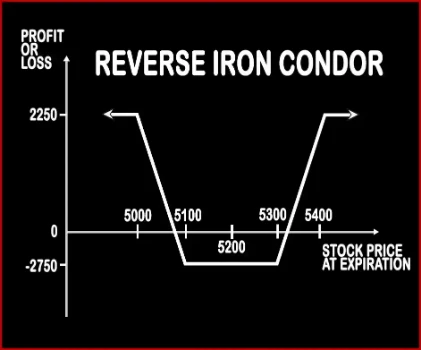- SHORT STRANGLE
- LONG STRADDLE
- THE COLLAR
- SHORT PUT BUTTERFLY
- LONG PUT LADDER
- STRAP
- COVERED COMBINATION
- BEAR CALL SPREAD
- LONG STRANGLE
- SYNTHETIC LONG CALL
- IRON CONDORS
- RISK REVERSAL
- SHORT STRADDLE
- RATIO PUT SPREAD
- LONG GUTS
- SHORT CALL
- PUT BACKSPREAD
- PROTECTIVE CALL
- LONG CALL CONDOR SPREAD
- SHORT PUT LADDER
- COVERED PUT
- LONG COMBO
- PROTECTIVE COLLAR
- MARRIED PUT
- CHRISTMAS TREE SPREAD WITH CALL OPTION STRATEGY
- DIAGONAL BULL CALL SPREAD
- REVERSE IRON CONDOR
- LONG CALL BUTTERFLY
- CHRISTMAS TREE SPREAD WITH PUT OPTION
- RATIO CALL WRITE
- STOCK REPAIR
- BULL CALL SPREAD
- BEAR PUT SPREAD
- PROTECTIVE PUT
- SHORT PUT
- LONG PUT
- BULL PUT SPREAD
- LONG CALL LADDER
- SHORT CALL CONDOR SPREAD
- SHORT CALL BUTTERFLY
- SHORT GUTS
- LONG CALL
- STRIP
- IRON BUTTERFLY
- REVERSE IRON BUTTERFLY
- RATIO PUT WRITE
- SHORT CALL LADDER
- RATIO CALL SPREAD
- NEUTRAL CALENDAR SPREAD
- DIAGONAL BEAR PUT SPREAD
- COVERED CALL
- CALL BACKSPREAD
- LONG PUT BUTTERFLY
- BULL CALENDER SPREAD
Compare Strategies
REVERSE IRON CONDOR

Reverse Iron Condor Option Strategy
Reverse Iron Condor as the name suggests is the opposite of Iron Condors. In Reverse Iron Condor, a trader is bullish about volatility and expects the market to make a significant move in the near future in either direction. Here a trader will buy 1 OTM Call Option, sell 1 Deep OTM Call Option, buy 1 OTM Put Option, sell 1 Deep OTM Put Option. This strategy also bags limited profits with limited risk.
Risk: Limited
Reward: Limited
Suppose NIFTY is trading at 5200 odd points, Mr. X is bullish on volatility and indecisive on market movements. He will sell 15400 NIFTY Deep OTM Call Option for a premium of Rs.25, buy 15300 NIFTY OTM Call Option at a premium of Rs.55, buy 15100 NIFTY OTM Put Option for a premium of Rs.50, sell 15000 Deep OTM Put Option at a premium of Rs.25. Lot size of NIFTY is 50. Mr. X’s account will be debited by Rs.2750. [{(25+25)-(55+50)}*50]
Case 1: At expiry if NIFTY closes at 4800, then Mr. X will make a profit of Rs.2250. [{(25) – (55) + (300-50) – (200-25)}*50]
Case 2: At expiry if NIFTY closes at 5200, then Mr. X will lose the premium amount that was paid at the time of entering the positions i.e. Rs.2750.
Case 3: At expiry if NIFTY closes at 5600, then Mr. X will make a profit of Rs.2250. [{(300-55) – (200-25) – (50) + (25)}*50]
Comments for REVERSE IRON CONDOR
Options Trading Strategies
Bullish Strategies
Bearish Strategies
Neutral Strategies
- LONG STRADDLE
- SHORT STRADDLE
- LONG STRANGLE
- SHORT STRANGLE
- LONG CALL BUTTERFLY
- SHORT CALL BUTTERFLY
- LONG PUT BUTTERFLY
- SHORT PUT BUTTERFLY
- STRAP
- STRIP
- LONG CALL LADDER
- LONG PUT LADDER
- SHORT CALL LADDER
- SHORT PUT LADDER
- LONG CALL CONDOR SPREAD
- SHORT CALL CONDOR SPREAD
- NEUTRAL CALENDAR SPREAD
- LONG GUTS
- SHORT GUTS
- RATIO CALL SPREAD
- RATIO CALL WRITE
- RATIO PUT SPREAD
- RATIO PUT WRITE
- IRON CONDORS
- IRON BUTTERFLY
- REVERSE IRON CONDOR
- REVERSE IRON BUTTERFLY
- PROTECTIVE COLLAR
0 comments